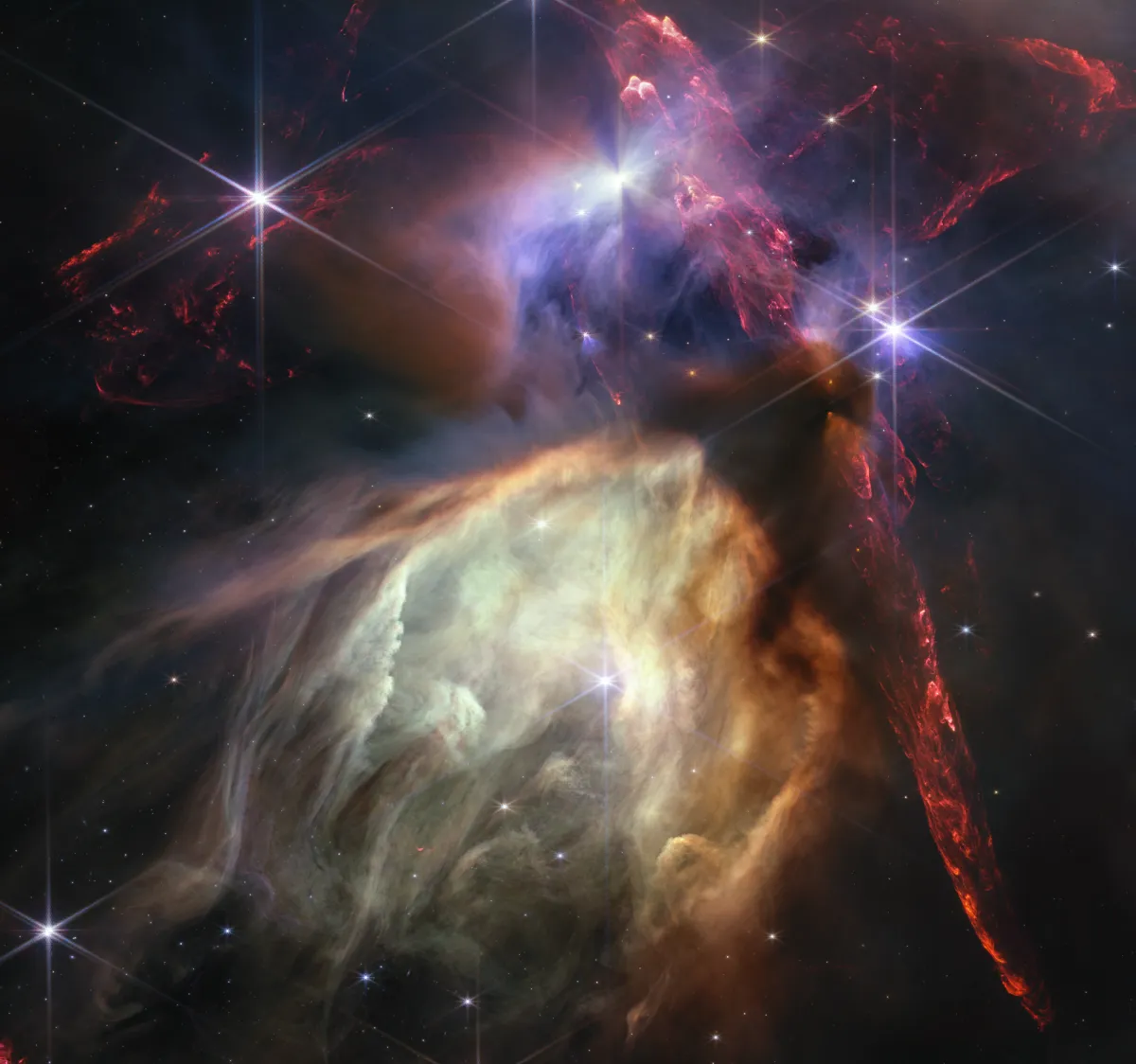The James Webb Space Telescope team has celebrated the observatory's first year of science operations with an incredible view of the Rho Ophiuchi cloud complex.
The Rho Ophiuchi complex is the closest star-forming region to Earth, at 'just' 390 lightyears away.
- See the latest James Webb Space Telescope images

The image shows a region containing about 50 young stars, all about the same mass of our Sun, or smaller.
Dark areas represent thick pockets of cosmic dust, providing the raw ingredients out of which new stars are being born.
Streaks of red are bipolar jets of molecular hydrogen, which occur when a newborn star's youthful energy causes it to burst through the dusty pocket from which it was born.
In the lower half of the image, the huge cavernous carving of cosmic dust has been produced by star S1, which is the only star in the image that's significantly more massive than the Sun.
While in its first year the Webb Telescope has given us incredible views of the early Universe by effectively peering back in time through its distant observations, here we get a glimpse of what our own early Solar System might have been like.
"Webb’s image of Rho Ophiuchi allows us to witness a very brief period in the stellar lifecycle with new clarity," says Klaus Pontoppidan, who served as Webb project scientist at the Space Telescope Science Institute in Baltimore, Maryland, since before the telescope’s launch and through the first year of operations.
"Our own Sun experienced a phase like this, long ago, and now we have the technology to see the beginning of another star’s story."
"In just one year, the James Webb Space Telescope has transformed humanity’s view of the cosmos, peering into dust clouds and seeing light from faraway corners of the universe for the very first time," says NASA Administrator Bill Nelson.
"Every new image is a new discovery, empowering scientists around the globe to ask and answer questions they once could never dream of."
